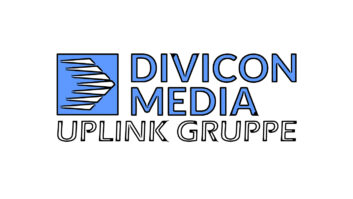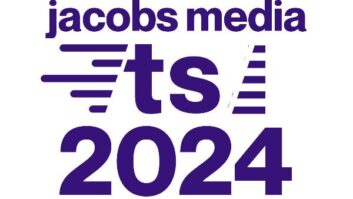With its “Leonardo” project, CH Media Entertainment created a new headquarters complex for radio, regional/national television, and online content in the Oerlikon quarter of Zurich. For the Radio World ebook “Spectacular Radio Studios 2023,” we asked Head of IT Andy Russ about it.
Radio World: Describe the organization and the scope of this project.
Andy Russ: CH Media Entertainment is considered “number 1” in the private radio and TV sector in Switzerland and stands for first-class entertainment nationwide. The company operates six locations in German-speaking Switzerland — Aarau, Bern, Lucerne, St. Gallen, Solothurn and Zurich — and produces for nine full-service radio stations: Radio 24, Radio Argovia, FM1, Radio Pilatus, Radio Bern1, Virgin Radio Switzerland, Radio Melody and FlashBackFM. In 2023, another site with three stations will be added.
The portfolio also includes five regional and nine national TV stations and five Online Today platforms, and a variety of streaming platforms with individual programming. CH Media owns 80 brands in radio, TV, newspapers, magazines, advertising papers, digital platforms, print and distribution.
The radio facilities of the Leonardo project comprise three broadcast studios, two production studios for on-air support, two news production studios and two studios for multitrack editing, plus a “tri-medial” newsroom — radio, TV and online — with four production and planning workplaces for radio news.
The Leonardo headquarters brings three former locations from Zurich under one roof. We also established a real-time connection via audio/video-over-IP (Ravenna as well as SMPTE ST 2110) to the other CH Media Entertainment locations for radio and TV.
RW: Why is it called Leonardo?
Russ: That’s the name of the building, which is well known in Switzerland because it was the first big building constructed according to the Minergie standard, in 2002.
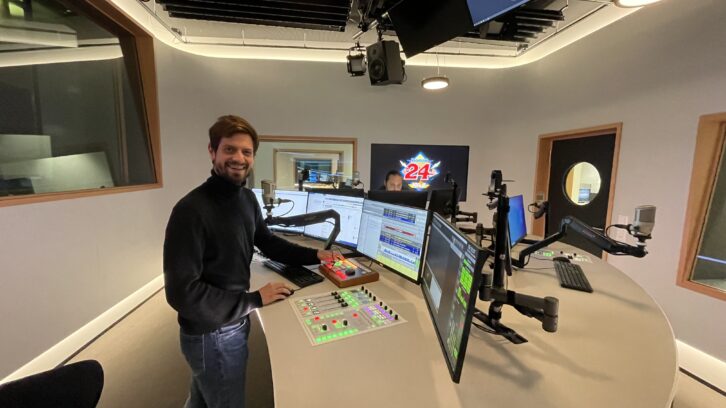
RW: Who led the technical project?
Russ: I was project manager for the radio and IT part. We awarded the studio construction, including construction support for the architect as well as the infrastructure design, to system integrator SLG Broadcast, with whom we have been working for years.
By means of a jointly conducted workflow analysis across all locations, the workflows were redefined, and in this process production resources were also consolidated. For audio production in radio and TV, the newly developed modular Lawo diamond broadcast mixing console, as well as the new Lawo mc² 36 audio production console based on A__UHD core technology, were introduced across all sites. The same applies to the broadcast playout systems in radio, where the proven Danexis DABiS800 is used. Bionics Studio is used for talk shows and visual radio.
RW: Who were the major service providers?
Russ: Architectural services were by the Zurich-based Moor Architekten, while planning for electrical, heating, air-conditioning and ventilation installations was carried out by a planning office from Zurich. SLG Broadcast provided support for the studio-related technical planning and the acoustics. The technical transformation for the building was awarded on the basis of a call for tenders. SLG Broadcast and CH Media were jointly responsible for integration of the audio systems, intercom and real-time SMPTE 2110 networking for the radio facilities.
RW: And the major hardware and software systems?
Russ: The installation includes 14 Lawo Power Core I/O, Mixing, Processing & Routing Engines and eight modular diamond broadcast consoles. In addition, 28 units of the Lawo VisTool Virtual Radio Studio environment, two compact Lawo mc²36 mixing consoles with A__UHD Core technology, six WAN-enabled AoIP nodes, a Lawo Nova73 routing system, two LCU commentary systems and 11 Lawo on-air4 units were installed.
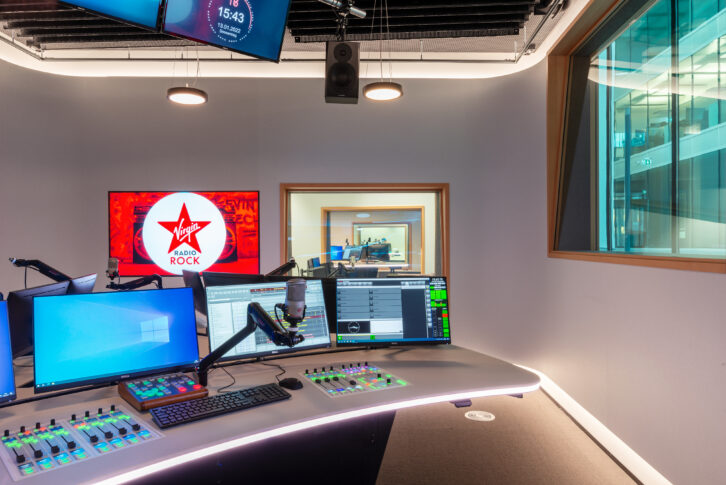
For the talk show system, 20 Bionics Studio Clients and two Virtual Directors from Broadcast Bionics are in use. The intercom, based on a multi-site Clearcom Exclipse system that is mainly used in the TV area, is networked via Ravenna, while Lawo on-board equipment is used for intercom services in the radio area. Clearcom intercoms in the newsroom bring both systems together.
The KVM system was established using an IHSE Draco system, also used at the remote sites. SLG Broadcast Suite, a middleware developed by SLG Broadcast, handles functions such as monitoring and control for optimizing radio workflows. It also provides a virtual MCR to enable users at the various workplaces to access the different real-time audio signals. This enables user-friendly application of resources in the various studios, news desks, etc.
Other choices include Sound4 Impact processors; Lawo mc2 DSP for mic channels; DAVID Multitrack Editor; Avid ProTools; Neumann BCM 104 Microphones with O.C. White arms; Dynaudio loudspeakers; and Dream Chip video cameras. The height-adjustable radio furniture is designed by SLG Broadcast, made by Swiss manufacturer Erich Keller AG.
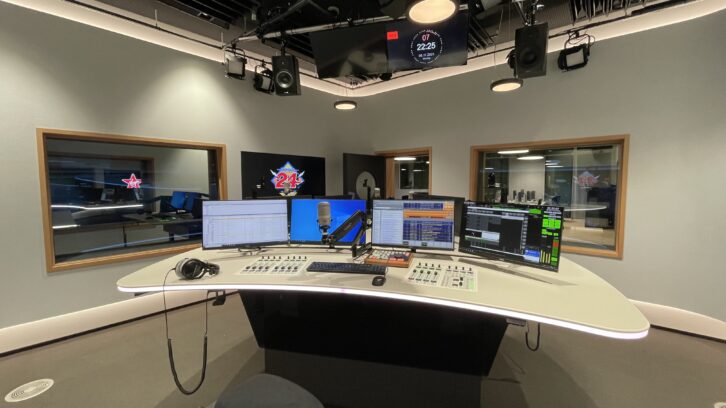
RW: What would a fellow engineer or manager find most interesting?
Russ: We have dispensed with an orchestrator for the ST 2110 real-time network of IP audio and video signals and instead established a strong network segmentation. This affects many areas. For example, the media types — audio for radio, audio for TV including intercom and video — were segmented individually. Therefore, individual segments were created between the sites via two redundant and independent 100 Gb WAN networks using ST 2022-7 stream redundancy, which takes place at the end devices. All signals arrive at the Zurich site and are split into further segments for different productions.
In principle, we decided against an all-IP approach: While IP is used for site networking, the radio area, the studios (segments) and the NewsDesk, connections between the studios and the equipment room are provided via MADI (baseband).
In the TV area, on the other hand, an all-IP solution was chosen for the audio in segments, where Lawo’s HOME platform for managing IP infrastructures is used in combination with the VSM broadcast control system for the mc² systems, stageboxes and the internal and external locations. The mc² consoles are furthermore connected to a redundant HOME system. The video signals are transmitted on baseband SDI standard. The TV editing suites are based on Ravenna and equipped with Lawo On-Air 4; there, too, the video is connected via baseband. We were able to bring a cost-efficient solution on-air and on time in the very short project duration.
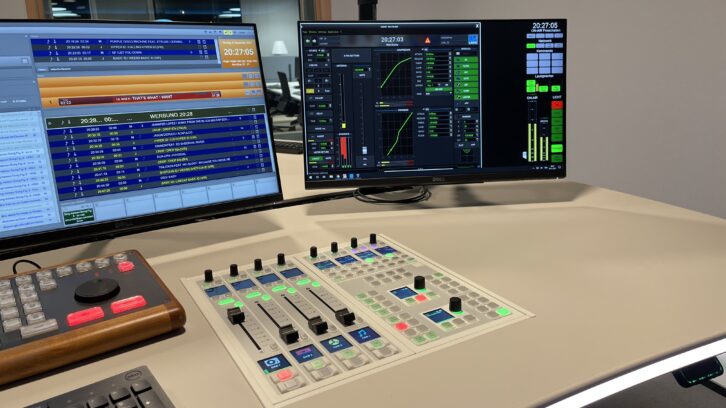
I’d like to emphasize the effective teamwork of all parties involved. We also got our long-time switch manufacturer Fortigate to implement One Step PTP in their products in the short time available. Fortigate is not only our firewall, but with Fortiswitch they are also our supplier of choice for the office environment, since with the introduction of AoIP at the workplaces, an integration of Ravenna became a “must-have” in the offices. SLG Broadcast provided us with expertise to guide Fortigate through the iterations of development.
Real-time networking was realized with Mellanox for video-over-IP, Artel 10 Gb for audio-over-IP via WAN and multiple Meinberg M1000s for the various sites and segments. Our goal was to avoid “agglomeration risk” through centralization: Each site remains autonomous, and the production areas are independent from each other but can still share production resources. We have successfully handed over a consolidation of workflows and technology to production in the radio segment.







